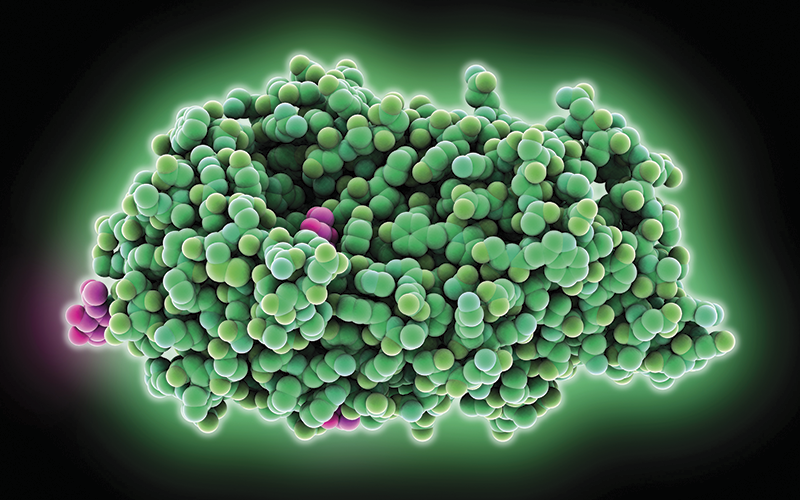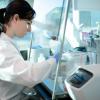In the third of our series looking at landmark moments in clinical chemistry, Stephen Clarke turns his attention to amylase and alkaline phosphatase.

From the vast methodology literature in clinical chemistry, this third short review selects two landmark papers with background notes, paying tribute to those early pioneers who developed long-serving assays for the analysis of blood serum amylase and alkaline phosphatase for clinical purposes.
Advances in protein chemistry and a greater understanding of enzyme catalysis and kinetics provided a foundation for enzyme assays, increasing the range of analytical approaches to the investigation of clinical disease.
Blood serum amylase
Enzymes as biological catalysts are essential to life processes and evolutionary genetic studies have demonstrated their ancient history.(1) Diastase, later known as amylase, was the first enzyme to be discovered by Payen and Peroz in 1833, when it was shown that alcoholic extracts of malt could convert starch to sugars.(2) It it was later shown that amylase was present in saliva (1845) and that pancreatic juice could digest starch (1846).
In 1908, amylase was the first enzyme to be quantitatively assayed, by Julius Wohlgemuth, at the University of Berlin, with a method which could be applied to urine, blood or duodenal fluid.(3-4) Amylase is now known to be a dependent metalloenzyme, which catalyses the hydrolysis of links between adjacent glucose units to break down complex carbohydrates, such as starch to dextrins, maltotriose, maltose and glucose.
Wohlgemuth used this amyloclastic (ALC) principle based on the decrease of starch-iodine colour after a standard period of incubation and many variations were introduced, notably in the composition of starch and endpoint determination. Alternative assays were saccharometric (SCM), measuring the increase in sugar after starch incubation,(5) or viscosimetric, notably developed by the US surgeon Robert Elman (1897-1956) who promoted the value of serum amylase in acute pancreatitis with studies between 1927 and 1937.(6) He later became world renowned for supplementary amino acid nutrition, saving lives of war-scarred victims of the Second World War.
Michael Somogyi
The Hungarian-born US biochemist Michael Somogyi(7) worked at Washington University School of Medicine in St Louis, Missouri. With Edward Doisy and Philip Shaffer, he prepared purified insulin for its first successful use in treatment in 1922. He moved to the Jewish hospital of St Louis in 1926 for his remaining professional career and published over 70 papers in clinical chemistry, notably on blood protein precipitants, methods for blood sugar and ketone bodies.
This landmark paper described modifications of both ALC and SCM methods realising the clinical needs for an urgent simple, rapid, sensitive and reliable procedure with the former and a more robust assay with the latter. This popular ALC procedure used 1ml serum with a carefully prepared clear corn starch preparation and standardised iodine with timed withdraw until the red brown colour of erthyrodextrin was obtained and results calculated from time taken into Somogyi units with a reference range of 80-180 units/100ml serum.
Modifications were made by Street and Close (1956) and by Somogyi himself in 1960.(8)
Chromogen-linked substrates became popular during the 1970s notably “Phadebas” launched in 1970 until superseded by automated amylase systems using well-defined substrates with auxiliary and indicator enzymes and NAD/NADH spectrophotometric end points or substrates releasing 4 nitrophenol for colorimetric assays.(9)Blood serum alkaline phosphatase Studies of the hydrolysis of phosphoesters were made by Suzuki (1907), and Grosser (1912) found this reaction occurred in many tissues.(10) Significant advances in understanding bone mineralisation were made by the British biochemist, Robert Robison at the Lister Institute – he isolated active alkaline phosphatase (ALP) from animal bone extracts in 1923 used as a biochemical reagent to explore possible substrates.(11)
In 1924 Robison and Herbert Kay showed that phosphoesters were present in blood plasma and in 1929 Kay devised a method for plasma ALP using incubation with beta glycerophosphate (BGP) and measurement of phosphate produced and found greatly raised levels in certain active bone diseases.(12) In 1930 Roberts demonstrated raised results in obstructive jaundice and both Kay and Roberts later improved their methods. Russian-born US biochemist Aaron Bodansky favoured BGP procedure and in 1933, using a more sensitive phosphate reagent, was able to reduce incubation time and sample volume and his method was commonly used in the USA. Both Kay and Bodansky defined their unit of activity measurement and reference ranges. The value of ALP in bone and liver diseases became the main focus.
EJ King and AR Armstrong
Earl Judson King (1901-1962) was a Canadian-born biochemist who was a leading force in the development of clinical biochemistry in England while Head of Pathology at the Postgraduate Medical School in Hammersmith and later as Professor of Biochemistry at the University of London. He is noted for his emphasis on practical methods suitable for even small laboratories and for the use of micro methods. (13-14)
He developed a lifelong interest in organic phosphates and related enzymes while spending a period with Robison in 1928. He returned to Canada working at the Banting Institute at the University of Toronto as Head of Pathology and reported this paper with his colleague, A Riley Armstrong. This method with the alternative ‘Bodansky’ procedure became the substantive manual methods for around 30 years prior to automation. King and Amstrong preferred sodium phenyl phosphate as substrate more rapidly hydrolysed by ALP reducing the incubation time and sample volume.
The substrate was buffered to pH9 and phenol measured colorimetrically with Folin and Ciocalteu reagent (phosphotungstic and phosphomolybdic acids) to produce a blue chromogen read at 640nm against a phenol standard. Enzyme activity was recorded in KA units defined as the liberation of 1mg of phenol per 100ml serum with a reference range of 3-13KA units. Greatly raised results are seen in bone disease, such as rickets and osteomalacia and liver diseases, with increases in infective hepatitis and more so in obstructive jaundice.
King and colleagues at Hammersmith developed a method for combining serum phosphate and ALP determinations(15) and later devised a procedure for ALP which used amino-antipyrine to react with phenols in the presence of an alkaline-reducing agent, potassium ferricyanide, to produce a red quinol for a more rapid and stable colour(16), this was later adapted for automation. It had been long known that ALP was present in tissues and isoenzymes have been detected in kidney, intestinal mucosa and placenta using electrophoretic techniques(17) or by resistance to heat, liver isoenzyme is heat stable, while bone isoenzyme is heat labile. Structural studies show that human ALP is a zinc-containing metalloenzyme with some structural differences between isoenzymes and four structural genes encoding for ALP have been cloned, sequenced and mapped to chromosomes.(18)
Amylase and alkaline phosphatase measurements have proved to be extremely valuable aids in diagnostic and therapeutic medicine. The flurry of scientific research and development between 1930 and 1960 has borne fruit and became the foundation of clinical enzymology inspired by those, such as Michael Somogyi and Earl King and many others who have been all too briefly mentioned in this short review.
Stephen Clarke is a retired IBMS fellow. He previously worked in clinical chemistry at Southmead Hospital, Bristol.
REFERENCES
1. Hamers L. Ancient enzymes adapted to cooler Earth to keep life’s chemical reactions going. Science News 2017; 191(2): 8
2. Dixon M. The history of enzymes and of biological oxidations ; In ‘The Chemistry of Life : Eight lectures in the history of biochemistry 1971 p 15-19 Cambridge University Press, London
3. Rosenfeld L. In ‘Four centuries of Clinical Chemistry’ 1999 CRC Press
4. Wohlgemuth J. Studies of diastase (translation)) Biochem Z 1908; 9: 1
5. Myers VC, Killian JA. Studies on animal diastases: the increased diastatic activity of the blood in diabetes and nephritis J Biol Chem 1917; 29: 179-189
6. Elman R. The variations of blood amylase during acute transient disease of the pancreas Ann of Surge 1937; 3: 379-384
7. Somogyi M. Micromethods for the estimation of diastase J Biol Chem 1938; 125: 399-414
8. Somogyi M. Modifications of two methods for the assay of amylase Clin Chem 1960; 6(1): 23-35
9. Amylase: Association of Clinical Biochemistry 2012
10. Coleman JE. Structure and mechanism of Alkaline phosphatase Annu Rev Biophys Biomol Struct 1992, 21: 441-83
11. Morgan WTJ. Robert Robison. Biochem J 1941, 35: 1081-1087
12. Kay HD Plasma phosphatase in osteitis deformans and in other diseases of bone. Br J Exp Pathol 1930; 10 (4): 253-256
13. King EJ, Armstrong AR. A convenient method for determining serum and bile phosphatase activity Can Med Assoc J 1934; 31: 376-381
14. Neuberger A, Klyne W. Earl Judson King. Biochem J 1963; 89(3): 401-404
15. King EJ, Abul-Fahl MAM, Walker PG. King-Armstrong phosphatase estimation by the determination of liberated phosphate J Clin Path 1951; 4 : 85-91
16. Kind PRN, King EJ. Estimation of plasma phosphatase by determination of hydrolysed phenol with amino -antipyrine. J Clin Path 1954; 7: 322-326
17. Hodson AW, Latner AL, Raine L. Iso-enzymes of alkaline phosphatase. Clin Chem Acta 1962; 7:255-261
18. Moss DW. Perspectives in alkaline phosphatase research Clin Chem 1992; 38(12): 2486-2492




